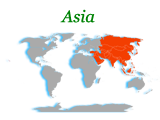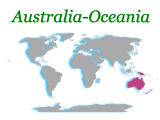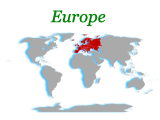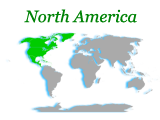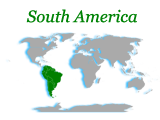Hungary became a Christian kingdom in A.D. 1000 and for many centuries served as a bulwark against Ottoman Turkish expansion in Europe. The kingdom eventually became part of the polyglot Austro-Hungarian Empire, which collapsed during World War I. The country fell under Communist rule following World War II. In 1956, a revolt and an announced withdrawal from the Warsaw Pact were met with a massive military intervention by Moscow. Under the leadership of Janos KADAR in 1968, Hungary began liberalizing its economy, introducing so-called "Goulash Communism." Hungary held its first multiparty elections in 1990 and initiated a free market economy. It joined NATO in 1999 and the EU in 2004.
Country Name
Conventional long form:Republic of Hungary
Conventional short form:Hungary
Local long form: Magyar Koztarsasag
Local short form:Magyarorszag
Government Type
parliamentary democracy
Capital
Name:Budapest
Geographic coordinates:47 30 N, 19 05 E
Time difference:UTC+1 (6 hours ahead of Washington, DC during Standard Time)
daylight saving time: +1hr, begins last Sunday in March; ends last Sunday in October
Administrative divisions
19 counties (megyek, singular - megye), 23 urban counties (singular - megyei varos), and 1 capital city (fovaros)
counties: Bacs-Kiskun, Baranya, Bekes, Borsod-Abauj-Zemplen, Csongrad, Fejer, Gyor-Moson-Sopron, Hajdu-Bihar, Heves, Jasz-Nagykun-Szolnok, Komarom-Esztergom, Nograd, Pest, Somogy, Szabolcs-Szatmar-Bereg, Tolna, Vas, Veszprem, Zala
urban counties: Bekescsaba, Debrecen, Dunaujvaros, Eger, Erd, Gyor, Hodmezovasarhely, Kaposvar, Kecskemet, Miskolc, Nagykanizsa, Nyiregyhaza, Pecs, Salgotarjan, Sopron, Szeged, Szekesfehervar, Szekszard, Szolnok, Szombathely, Tatabanya, Veszprem, Zalaegerszeg
capital city: Budapest
Independence
25 December 1000 (crowning of King STEPHEN I, traditional founding date)
National Holiday
Saint Stephen's Day, 20 August
Constitution
18 August 1949, effective 20 August 1949; revised 19 April 1972; 18 October 1989; and 1997
note: 18 October 1989 revision ensured legal rights for individuals and constitutional checks on the authority of the prime minister and also established the principle of parliamentary oversight; 1997 amendment streamlined the judicial system
Legal system
based on the German-Austrian legal system; accepts compulsory ICJ jurisdiction with reservations
Suffrage
18 years of age; universal
Executive branch
Chief of state: President Laszlo SOLYOM (since 5 August 2005)
Head of government: Prime Minister Viktor ORBAN (since 29 May 2010)
Cabinet:Council of Ministers prime minister elected by the National Assembly on the recommendation of the president; other ministers proposed by the prime minister and appointed and relieved of their duties by the president
(For more information visit the World Leaders website)
Elections:president elected by the National Assembly for a five-year term (eligible for a second term); election last held on 6-7 June 2005 (next to be held by June 2010); prime minister elected by the National Assembly on the recommendation of the president; election last held 29 May 2010
Election results: Laszlo SOLYOM was elected president by a simple majority in the third round of voting, 185 to 182; Viktor ORBAN was elected prime minister; result of legislative vote - 261 to 107
note: to be elected, the president must win two-thirds of legislative vote in the first two rounds or a simple majority in the third round
Legislative branch
unicameral National Assembly or Orszaggyules (386 seats; members elected by popular vote under a system of proportional and direct representation to serve four-year terms)
Elections:last held on 11 and 25 April 2010 (next to be held in April 2014)
Election results: percent of vote by party (5% or more of the vote required for parliamentary representation in the first round) - Fidesz 52.7%, MSzP %, Jobbik %, LMP %; seats by party - Fidesz 263, MSzP 59, Jobbik 47, LMP 16
Judicial branch
Constitutional Court (judges are elected by the National Assembly for nine-year terms)
Political Parties and Leaders
Alliance of Free Democrats or SzDSz [Attila RETKES]; Christian Democratic People's Party or KDNP [Semjen ZSOLT]; Hungarian Civic Alliance or Fidesz [Viktor ORBAN, chairman]; Hungarian Democratic Forum or MDF [Ibolya DAVID]; Hungarian Socialist Party or MSzP [Ildiko LENDVAI]; Movement for a Better Hungary or Jobbik [Gabor VONA]; Politics Can Be Different or LMP [13-member leadership]
Political pressure groups and leaders
Air Work Group (works to reduce air pollution in towns and cities); Company For Freedom Rights (Tarsasag a Szabadsagjogokert) or TASZ (personal data protection); Danube Circle (protests the building of the Gabchikovo-Nagymaros dam); Green Future (protests the impact of lead contamination of local factory on health of the people); environmentalists: Hungarian Ornithological and Nature Conservation Society (Magyar Madartani Egyesulet)or MME; Green Alternative (Zold Alternativa)
International organization participation
Australia Group, BIS, CE, CEI, CERN, EAPC, EBRD, EIB, ESA (cooperating state), EU, FAO, G-9, IAEA, IBRD, ICAO, ICC, ICCt, ICRM, IDA, IEA, IFC, IFRCS, ILO, IMF, IMO, IMSO, Interpol, IOC, IOM, IPU, ISO, ITSO, ITU, ITUC, MIGA, MINURSO, NATO, NEA, NSG, OAS (observer), OECD, OIF (observer), OPCW, OSCE, PCA, Schengen Convention, SECI, UN, UNCTAD, UNESCO, UNFICYP, UNHCR, UNIDO, UNIFIL, UNWTO, UPU, WCO, WFTU, WHO, WIPO, WMO, WTO, ZC
Diplomatic representation in the US
Chief of mission: Ambassador Bela SZOMBATI
Chancery:3910 Shoemaker Street NW, Washington, DC 20008
Telephone:[1] (202) 362-6730
FAX:[1] (202) 966-8135
Consulate(s) general: Chicago, Los Angeles, New York
Diplomatic representation from the US
Chief of mission:Ambassador Tsakopoulos KOUNALAKIS
Embassy:Szabadsag ter 12, H-1054 Budapest
Mailing address:pouch: American Embassy Budapest, 5270 Budapest Place, US Department of State, Washington, DC 20521-5270
Telephone:[36] (1) 475-4400
FAX:[36] (1) 475-4764
Flag description
three equal horizontal bands of red (top), white, and green; the flag dates to the national movement of the 18th and 19th centuries, and fuses the medieval colors of the Hungarian coat of arms with the revolutionary tricolor form of the French flag; folklore attributes virtues to the colors: red for strength, white for faithfulness, and green for hope; alternatively, the red is seen as being for the blood spilled in defense of the land, white for freedom, and green for the pasturelands that make up so much of the country



